Honda NS400R
With Ian Falloon
The father of Honda motorcycles, Soichiro Honda, was a devout four-stroke fan and long after he retired in 1973, the company remained loyal and committed to four-stroke street bikes.
Finally, after adhering to the four-stroke for 32 years, Honda released their first two-stroke street bike, the H100 in 1981. This was a harbinger of change for Honda, coinciding with a return to 500 cc Grand Prix racing with the NS500 two-stroke triple in 1982.
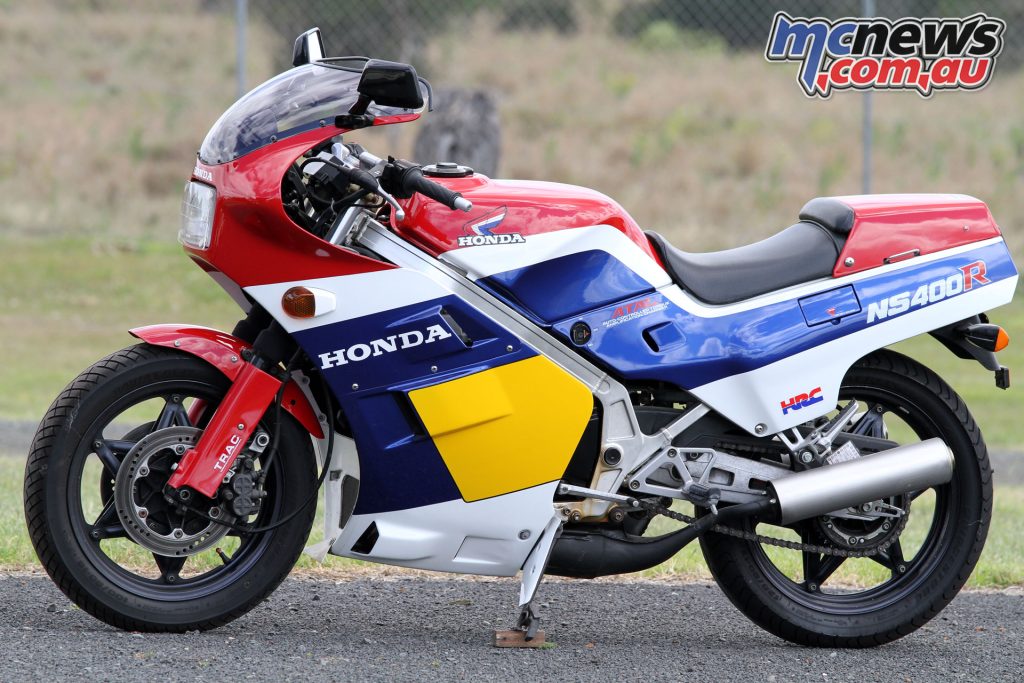
The racing NS500 was a brilliant machine and inspired Honda to produce the MVX250F. This was released in 1983 to take on Yamaha’s successful 250LC. Unlike the 110° V-three NS500 (with the cylinders arranged one down and two up), the MVX250F was a 90° V-three, with the two outer cylinders horizontal, and the third cylinder vertical.
This allowed for more space under the seat for an oil tank and battery. To overcome any imbalance, the crankpins were in line, with a heavier central con-rod, and thinner inner flywheels, and 15mm outer flywheels. On the left of the crank was the electronic ignition pick-up, with the water pump drive and clutch on the right. The crankshaft ran in four ball bearings, and reed valves regulated induction.
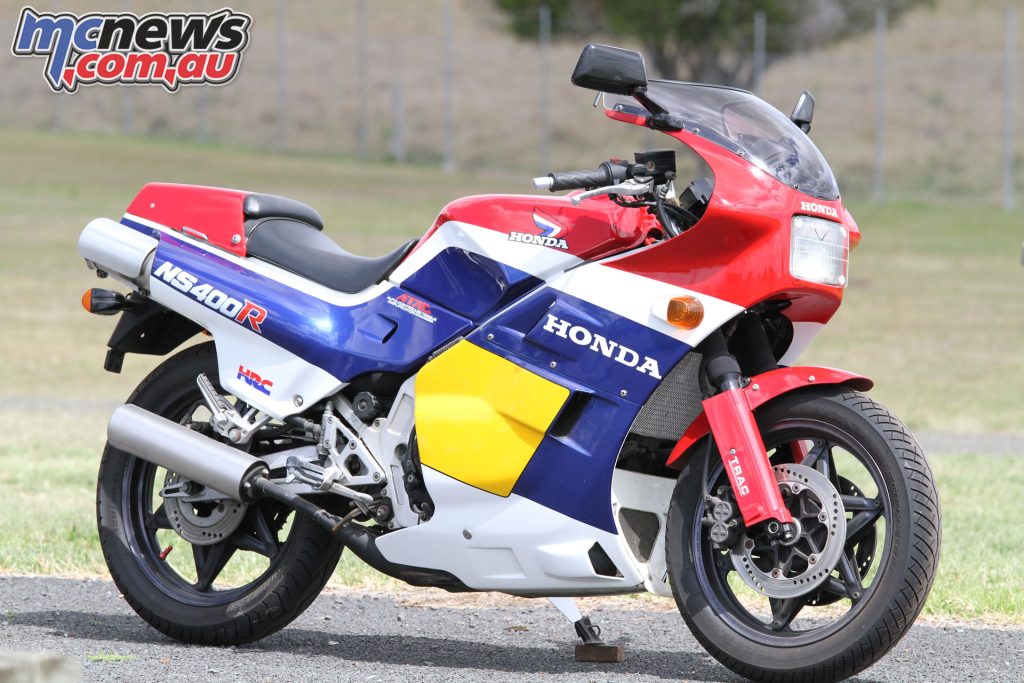
The porting was also simpler than the racer, with four transfer ports and a single bridged intake replacing the five transfers and huge intake port. Despite this impressive technical specification, the MVX250F’s performance was disappointing and after one year it evolved into the far superior NS400R.
Produced for only two years, 1985 and 1986, the NS400R was one of Honda’s two-stroke gems. As it was always intended a predominantly Japanese domestic market model the capacity was intentionally kept under 400 cc to reduce registration and insurance costs in Japan. Unfortunately, this always limited its appeal in export markets where it struggled against the full 500 cc Suzuki RG500 and Yamaha RD500.
Following the layout of the MVX250, the 57 x 50.6 mm triple displaced 387 cc. Unlike the MVX250 (but as on the racing NS500) two ATAC (Auto-controlled Torque Amplification Chamber) exhaust systems were installed on the front cylinders.
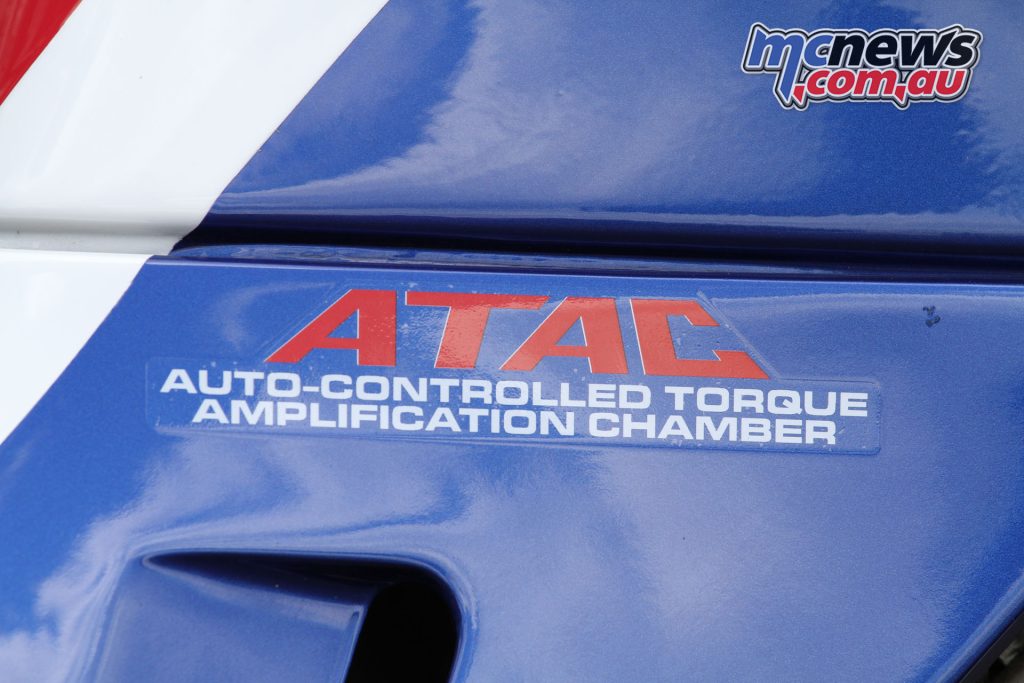
The ATAC was designed to increase low-end and mid-range power by varying the exhaust system volume according to rpm. Carburetion was by three 36 mm Keihins, and with a 6.7:1 compression ratio the power was 72 horsepower at 9500 rpm. The six-speed transmission was necessary to keep the peaky engine on the boil.
In typical Honda fashion the NS400R was beautifully detailed in Rothmans livery that mimicked Spencer’s Grand Prix machines. Adorned with dozens of spectacular alloy castings, including the frame and swingarm, the wheels were a bolted up tangential spoke racing-style in 16 and 17 inches. Unlike the MVX250 with its unusual enclosed disc, the brakes were conventional 256 mm discs, with dual piston calipers.
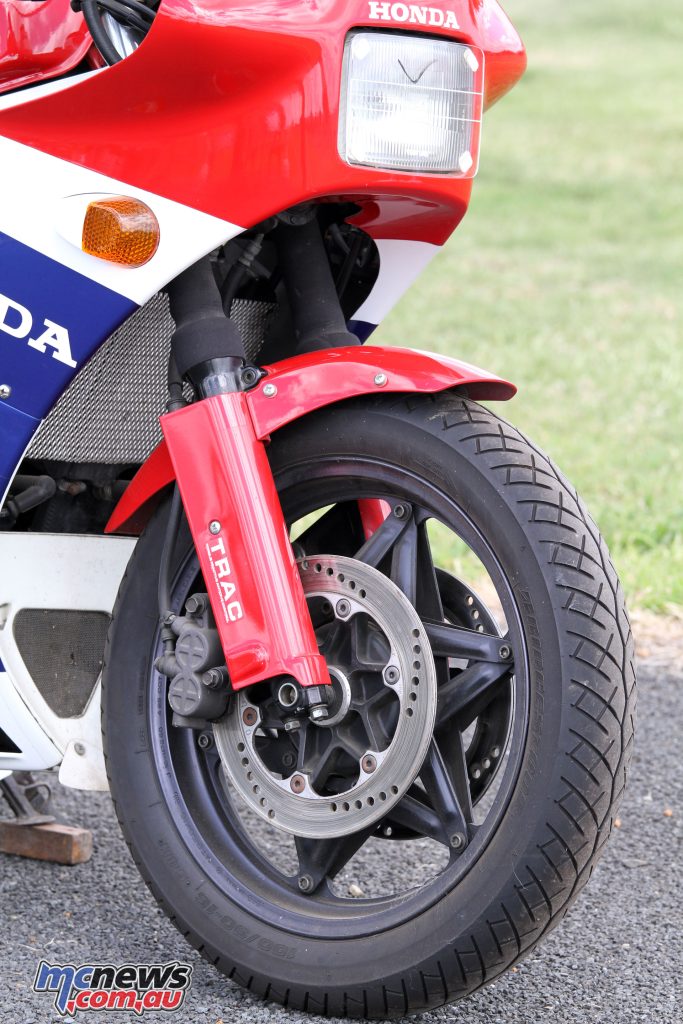
The 37 mm air-assisted fork had TRAC (Torque Reactive Anti-dive Control) and the rear suspension rising rate with an adjustable hydraulic rear shock. Weighing in at 163 kg the handling was superb, and the NS400R was respectably fast, with a top speed around 215 km/h.
Unfortunately, the peaky engine made the NS400R difficult to live with and it had to compete with the larger capacity Suzuki RG500 and Yamaha RD500LC. Despite its superb execution the NS400 was lost in no man’s land, between the 500s and 350s, and is now a rare beast.
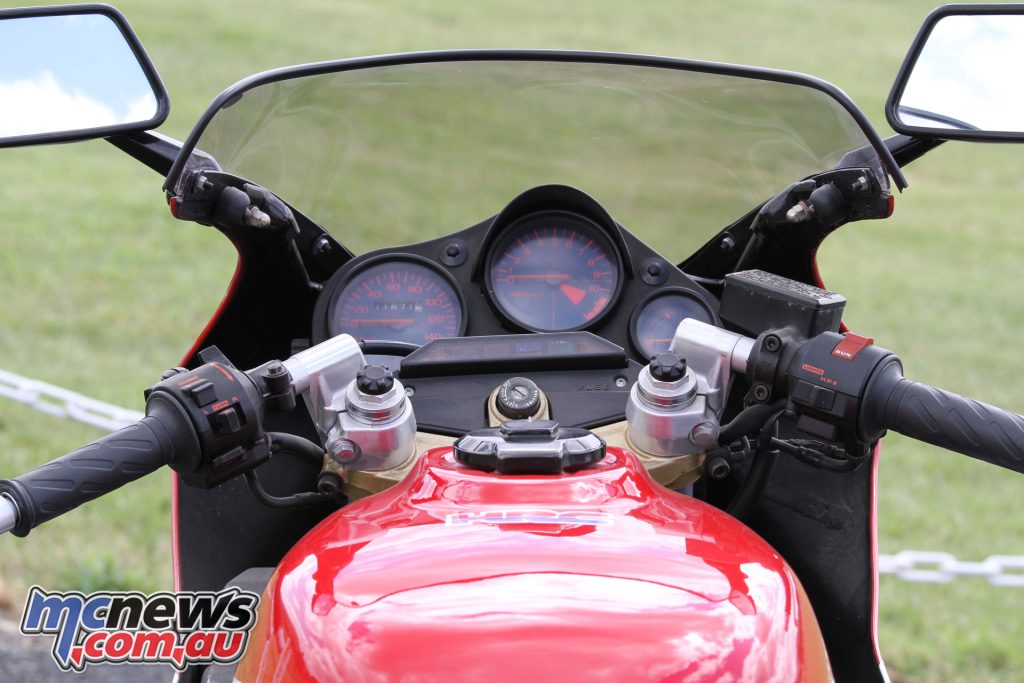
Five facts about Honda racing two-strokes
- Freddie Spencer provided Honda with their first 500 cc Grand Prix title in 1983, riding the three-cylinder NS500.
- Facing more opposition from Yamaha, the four-cylinder NSR500 replaced the triple during 1984. Spencer rode this to victory in the 1985 500 cc World Championship, also winning the 250 cc title that year.
- After Spencer unexpectedly retired from Grand Prix racing during 1986 Wayne Gardner assumed the role of lead rider in the Rothmans Honda team, comfortably winning the 1987 500 cc World Championship.
- Gardner received a new NSR500 for 1988 but this was underdeveloped and Gardner found it difficult to ride. Then for 1989 Lawson switched to Honda from Yamaha, taking the title after Gardner broke his leg early in the season.
- The final dominant era for the NSR500 was that of Mick Doohan. After overcoming serious injury in 1992 Doohan took five successive titles between 1994 and 1998.























